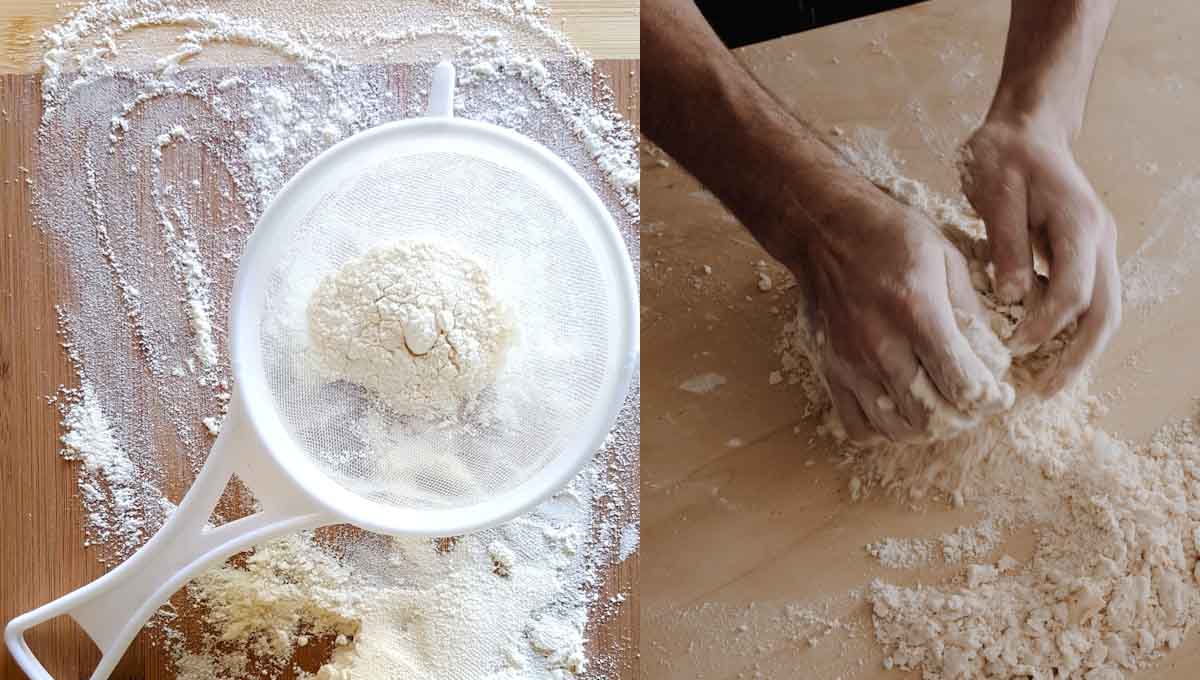Table of Contents
ToggleThe Truth of Maida: What You Need to Know
Refined wheat flour commonly known as Maida lacks the nutritional benefits of whole wheat flour. During refining, essential nutrients like fiber, vitamins B1, B5, B12, folate, and riboflavin are lost. This makes Maida harder to digest and can lead to health issues like constipation. The process of turning wheat into flour involves milling, which can be applied to other grains like oats, corn, barley, and rice.
What is Maida? Understanding: The White Flour.
Maida is a refined flour derived from wheat. Wheat grains, also called kernels, have three main parts: the endosperm, the bran, and the germ. Maida, also known as refined wheat flour, is a staple in many kitchens, especially for making bread and other baked goods.
When wheat grains are processed, the main part used is the endosperm, which is starchy and makes up about 85% of the grain. The outer layers, known as bran and the nutrient-rich germ, are usually removed during processing. This leaves the endosperm, which is ground into a fine, yellowish powder due to the presence of pigments called xanthophylls.

How is Maida Made?
To make Maida, wheat grains are ground into a fine powder, removing the outer bran and germ layers. To make Maida white and appealing to consumers, it undergoes a bleaching process using chemicals like hydrogen peroxide, benzoyl peroxide, and chlorine dioxide. This process removes the slight yellow tint from freshly milled flour, which comes from carotenoids.
The process of making Maida involves several steps:
- Cleaning: Wheat grains are cleaned to remove any impurities.
- Milling: The grains are then ground into flour. During this stage, the bran (fiber-rich outer layer) and germ (nutrient-rich core) are removed.
- Bleaching: Freshly milled flour has a slightly yellowish color due to natural pigments. To make it white, bleaching agents such as hydrogen peroxide, benzoyl peroxide, and chlorine dioxide are used.
Why do People Use Maida?
People are curious about how flour is made, especially those who are health-conscious. Maida is a staple in many kitchens, used for making bread, biscuits, and other baked goods. Despite its popularity, there are significant health concerns associated with its consumption.

People are curious about how flour is made, especially those who are health-conscious. Maida is a staple in many kitchens, used for making bread, biscuits, and other baked goods. Despite its popularity, there are significant health concerns associated with its consumption.
The Downside of Maida?
While Maida is made from wheat, it doesn’t offer the same health benefits as whole wheat flour. The refining process strips away vitamins like B1, B5, B12, Folate, and Riboflavin, as well as fiber, making it harder to digest and potentially leading to constipation. Whole wheat flour, on the other hand, is rich in nutrients and aids in weight loss and digestion.
Health Impacts of Maida.
While Maida is popular for its fine texture and versatility, it’s important to be aware of its health impacts:
- Digestive Issues: Maida contains no fiber and can act like glue in the intestines, leading to digestive problems such as constipation, bloating, and obesity.
- Blood Sugar Spikes: With a high glycemic index, Maida can cause blood sugar levels to spike, making it unsuitable for diabetics and pre-diabetics. Regular consumption can increase the risk of Type-2 diabetes.
- Nutrient Deficiency: The refining process strips Maida of essential nutrients found in whole wheat, contributing to nutrient deficiencies and related health problems.
- Weight Gain and Obesity: Maida’s lack of fiber and high-calorie content can lead to overeating and unhealthy weight gain.
- Increased Risk of Chronic Diseases: Diets high in Maida-based products are linked to conditions such as cardiovascular diseases, hypertension, and metabolic syndrome.
Unveiling the Truth About Refined Flour.
When it comes to unhealthy foods, Maida often finds itself at the top of the list in popular media. Yet, there’s little scientific evidence supporting the claim that refined flour is detrimental to our health. Despite this, the negative perception persists, leaving many in the baking industry feeling frustrated and hesitant to launch a counter-campaign. Here, Manoj John delves into the myths and facts surrounding Maida.
The Truth About Maida
Contrary to the beliefs of health enthusiasts, scientific investigations reveal that Maida is not the dietary villain it’s made out to be. Dr. Augustus Morris, a renowned surgeon and public speaker, asserts, “The propaganda around Maida is a hoax. Maida is simply the most refined product of wheat grain and contains no harmful substances.”
Maida, akin to cake flour in the West, is produced by removing the bran—the hard outer layer—from wheat grains. While bran is nutritious and present in various grains such as rice, corn, oats, and barley, the absence of bran in Maida does not inherently make it harmful.

Addressing the Alloxan Panic
A common concern is the presence of alloxan in Maida, a chemical purported to cause cancer and diabetes. KV Pankaj, a naturopathy practitioner, claims, “Maida contains alloxan which causes cancer and diabetes.” However, Dr. Morris counters this by explaining that alloxan is a toxic glucose analogue used in laboratory settings to induce diabetes in animals, not humans. Human physiology differs significantly from that of rodents, and extensive research, including studies published in Diabetologia, shows no link between alloxan and cancer in humans.
WebMD further supports this by highlighting over 40 studies indicating that whole grains, rather than refined grains, are linked to reduced cancer risks. Additionally, research in General and Comparative Endocrinology confirms that alloxan is not toxic to human insulin-producing cells, aligning with findings accepted by the National Academy of Sciences of the United States of America.
The Glycemic Index Debate
Another argument against Maida is its high glycemic index, which supposedly leads to Type II diabetes. While it’s true that Maida releases sugar into the bloodstream quickly, causing a sharp insulin response, Dr. Morris references studies disproving that this directly results in diabetes. The nuanced relationship between diet and health means that other factors also play significant roles.
Debate on Maida's Safety
While there are ongoing debates about the safety and health impacts of Maida, some experts argue that the negative claims are exaggerated. However, the excessive consumption of Maida can lead to various health issues.
What Science Says about Maida?
Scientific research contradicts the belief that Maida is a dietary villain. Dr. Augustus Morris, a noted surgeon, calls the anti-Maida sentiment a hoax, explaining that Maida is merely the most refined product of wheat grain, free from harmful substances. The process of making Maida involves removing the bran from wheat grains, which, while nutritious, does not make its absence harmful.

Glycemic Index Concerns
Maida’s high glycemic index, which causes a rapid insulin response, is often linked to Type II diabetes. Dr. Morris points to studies that disprove this direct link, highlighting that diet’s relationship with health is complex and influenced by various factors.
National Value and Safety Standards
Nutritionist Aditi Prabhu acknowledges that Maida lacks fiber, essential for digestion, suggesting it might not be ideal as a daily food ingredient. Nonetheless, Maida’s production adheres to strict health and safety standards. The FSSAI’s Manual of Methods of Analysis of Foods mandates rigorous tests for gluten content, alcoholic acidity, calcium carbonate in fortified Maida, protein content, crude fiber, mineral content, and moisture levels. These ensure Maida’s safety and quality.
Conclusion
While Maida is a key ingredient in many delicious foods, it’s important to be aware of its potential health impacts. Opting for whole wheat flour can provide more nutritional benefits and support overall health. As consumers, being informed about the foods we eat helps us make healthier choices.
While the debate around Maida continues, it’s clear that the fear surrounding refined flour is largely unfounded. Next time you enjoy a tandoori roti, remember that the so-called unhealthy Maida has undergone rigorous testing to ensure its safety. It’s time to re-evaluate the myths and embrace a balanced perspective on our dietary choices.


1 thought on “Maida, A white & Slow poison or Propaganda around it is a hoax”